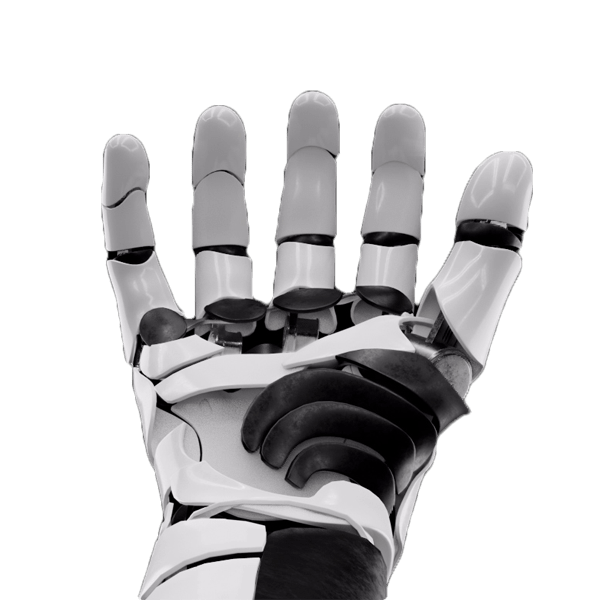I can feel it.
You probably can too.
A post shows up in your feed, perfect grammar, sharp formatting, maybe even a few emojis for emotional texture. But something’s off. No soul. No tension. No intention. It reads like someone told an algorithm what “engaging” looks like… and it followed instructions a little too well.
This is the paradox of the AI era. The very tools that promised to democratize creativity are now flooding the internet with formulaic content, trained on yesterday’s brilliance and recycled into tomorrow’s sameness. We once spent decades building open knowledge systems, Google indexing the world’s information, Wikipedia weaving facts through consensus, creators turning pain into prose. Now, we’re watching those raw, human edges get smoothed over by machines optimized for output, not originality.
The result? A digital landscape where producing content is easier than ever… and standing out is harder than it’s ever been.
The “Sea of Sameness”: How We Got Here
Generative AI didn’t just change how content is made, it changed who makes it, how fast, and how often. Nearly every team now has access to tools that can write, design, or summarize at remarkable speed. But when everyone relies on the same engines, trained on the same data, guided by similar prompts, the outputs begin to blur. Fast becomes flat. Scalable becomes stale.
Search for “comfortable running shoes,” and you’ll encounter pages filled with identical phrases: “breathable mesh upper,” “lightweight cushioning,” “ideal for long-distance runs.” These aren’t errors, they’re echoes. And that uniformity isn’t just aesthetic; it’s strategic dilution. Brands are reporting lower engagement, declining recall, and increasing difficulty in commanding premium pricing. The reason? Sameness breeds invisibility.
What began as a promise of personalized, on-demand storytelling has quietly morphed into a content monoculture, a flood of high-volume, low-friction, low-surprise material. In a world where everyone is publishing, performing, and optimizing, audiences are no longer seeking what’s most available. They’re gravitating toward what feels most intentional.
Creativity Has a New Job Description
In this saturated landscape, the differentiator isn’t more content. It’s better judgment.
What sets brands apart today isn’t who can generate the fastest caption or the most SEO-friendly headline, it’s who knows what not to say, which stories are worth telling, and how to speak in a voice that’s unmistakably human. Strategy, tone, and timing are no longer afterthoughts, they are the edge. And cultivating that edge requires expertise, not just access.
At Infinite Stair LLC, we work with founders, marketers, and creative leaders who want to build that edge, through frameworks, voice development, and brand systems that hold up in a world of instant content. It’s not about resisting AI. It’s about raising the bar for what human creativity looks like with it.
Want help applying this to your business? Let’s talk at Infinite Stair LLC.
What AI Can’t Replicate: Emotion, Intuition, and Context
AI can mimic language, but it doesn’t know why something matters.
It doesn’t feel tension in a room, hesitate before hitting “send,” or instinctively know when a message will land, or backfire. It can summarize thought leadership, but it can’t live a contradiction, change its mind, or turn vulnerability into insight. And it certainly can’t spot the subtle cultural pulse that tells you this moment is different.
This is the terrain of humans: emotion, intuition, context. The things that don’t fit neatly into data models but are essential to trust, persuasion, and connection. In fact, 52% of consumers say they disengage from content they suspect is AI-generated, and 26% perceive that content as lacking authenticity. The deeper the stakes, the higher the premium on real voice.
In a world full of content, people don’t remember what you said, they remember what you meant.
The New Role of the Creative: From Producer to Curator-Strategist
The creative’s job used to be execution: write the copy, design the ad, build the deck. Today, much of that can be drafted in seconds. What can’t be replaced, what’s now more valuable than ever, is the ability to curate, contextualize, and direct.
The modern creative is a pattern reader, a narrative architect, a taste-maker. They don’t just generate ideas, they filter them, elevate them, and frame them for impact. That’s why the best campaigns today don’t come from tools. They come from people who know how to use those tools with purpose.
Take Fiverr’s “Nobody Cares” campaign, or Nike’s timeless ability to channel human grit into story. Or even Dannijo, a jewelry brand that built an entire emotional universe around the real lives of its founders. These aren’t just campaigns. They’re interpretations of the world, something AI can’t do without someone guiding the lens.
When everyone has access to the same keyboard, voice becomes the real advantage.
Five Human-Led Differentiation Strategies That Actually Work
In a content landscape dominated by AI-scale production, the path to relevance isn’t more, it’s meaningful. Here are five strategies that consistently set brands apart:
- Develop a distinctive brand voice and narrative.
Treat your tone like a signature, not a template. Make sure every line sounds like you, not like an optimized average. - Leverage deep expertise and original insights.
Publish what only you could know. Proprietary data, lived experience, nuanced perspective, this is what makes content irreplicable. - Create human-centric experiences.
Design for emotional resonance, not just functional flow. Use lo-fi formats, founder stories, even imperfections, to make content feel like it came from someone, not something. - Use AI to augment, not replace.
Let AI handle the repetition and logistics. Use your time for synthesis, provocation, humor, and judgment. That’s the real work now. - Be radically transparent.
If AI helped, say so. Own your process. In a landscape of polished fakery, honesty is a branding advantage.
These aren’t just tactics. They’re strategic posture shifts, choices that build long-term brand equity in a marketplace that’s learning to tune out the generic.
The Future Belongs to Those Who Know What to Say
The lesson isn’t to reject AI. It’s to raise our standards in how we use it. The real transformation isn’t technical, it’s cognitive, emotional, strategic. We’re not competing with machines. We’re competing with indifference.
Even the internet’s most influential gatekeepers know this. Google now penalizes content that’s “generated with little to no effort, originality, or added value.” Wikipedia refuses to let AI replace its human editors, insisting on context, consensus, and accountability. These aren’t nostalgic stances, they’re forward-looking strategies for trust.
Because in the end, content isn’t about being everywhere. It’s about meaning something to someone. And the brands, agencies, and creatives who embrace this human-first imperative, who know how to wield AI without becoming it, will own the next era of attention.
References
AI Content Saturation on LinkedIn
Over 50% of long-form posts on LinkedIn are likely AI-generated, prompting concerns around authenticity and engagement.
Reddit thread on AI in LinkedIn
Google’s Policy on AI-Generated Content
Google’s Search Quality Evaluator Guidelines have been updated to target scaled AI content with low originality or effort.
Google Search Central Blog
Wikipedia’s Human-Centered AI Strategy
Wikimedia Foundation’s approach centers on supporting volunteers through assistive AI, not automation. Wikimedia Foundation AI Strategy
Campaigns That Highlight Human-Centric Creativity
Case studies like Nike’s “Just Do It” and Fiverr’s “Nobody Cares” reinforce the irreplaceable value of human insight in storytelling.
Campaign US: Branding and Emotion
Google SpamBrain and Content Quality Detection
SpamBrain’s AI capabilities detect low-effort or auto-generated content, reinforcing a quality-first ranking model.
Search Engine Journal on SpamBrain
Wikimedia’s Disclosure and Editorial Integrity Policy
All AI-assisted contributions on Wikipedia must be verified and disclosed using the {{AI-notice}} template.
Wikipedia: AI-Generated Content Policy





